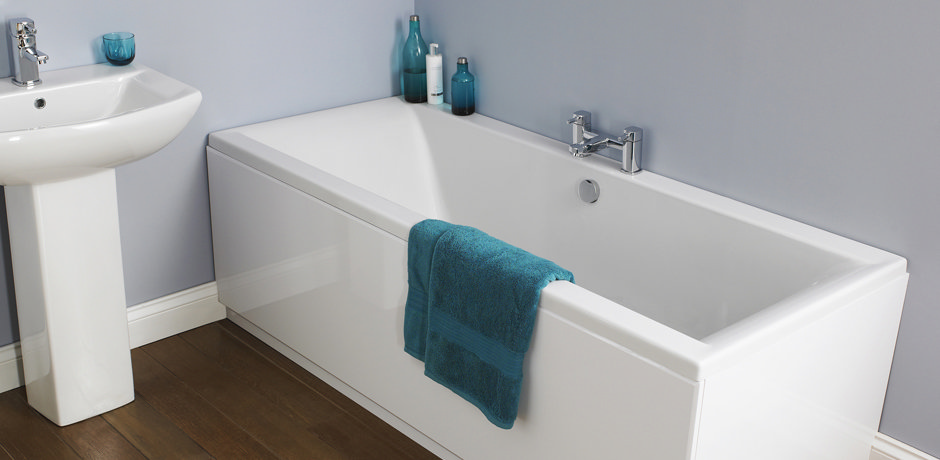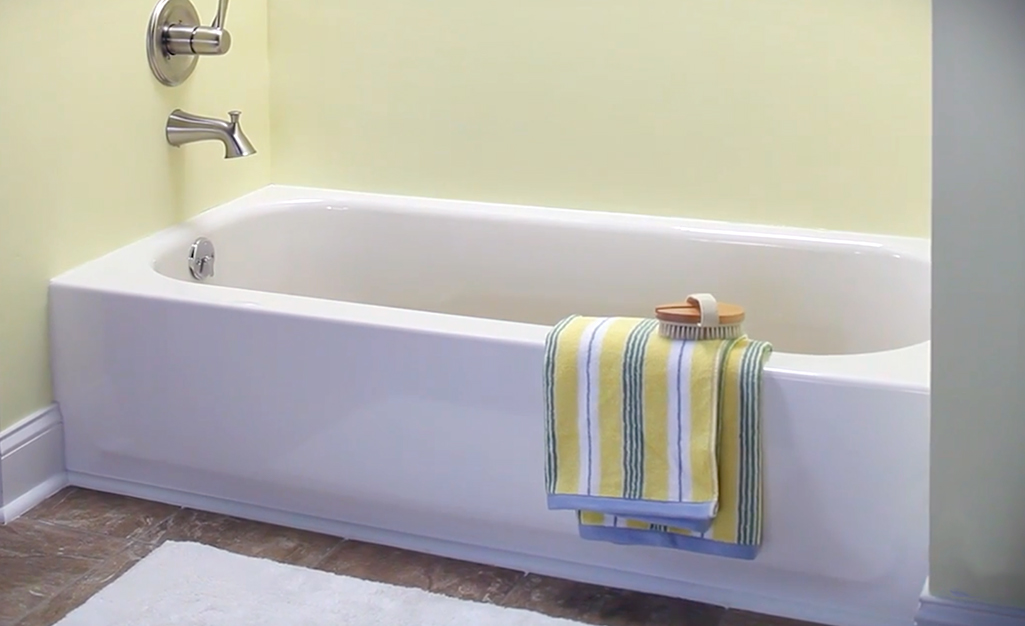Plumbing 101: A Necessity for Bathtub Installation
Plumbing 101: A Necessity for Bathtub Installation
Blog Article
Everybody may have their unique piece of advice with regards to Tools You Need to Install a New Bathtub .

Mounting a bathtub isn't specifically rocket science, but it does call for solid plumbing, woodworking, as well as often, tiling skills. Replacing an old bathtub with a brand-new one is also a reasonably difficult task. If the old bathtub is readily accessible, the project can relocate easily; if you need to open up a wall surface to get rid of the old tub and place the new bath tub, the task is much harder. In either situation, the task is within a home handyman's skills, although you will need a helper to move out the old tub and set in the new one. See to it you have actually qualified on your own for the task as well as are comfortable trying it. Rather than employing a service provider to take over a halfway-completed job, it is better to take into consideration employing one prior to you begin. Opportunities are you might require a specialist plumber to make tube connections.
This article will certainly assist you set up a new bath tub in your bathroom if you have actually already bought a brand-new tub as well as do not require to change the arrangement of your previous water system pipes.
Your tools and also material list ought to consist of the following:
Removing Old Touches
If you need to replace old faucets with brand-new ones as a part of your setup, after that the first thing you should do is separate the supply of water. After doing so, activate the taps to drain any water staying in the system. The process of removing the existing taps can be fairly bothersome because of the restricted gain access to that is commonly the instance.
Make use of a basin wrench (crowsfoot spanner) or a tap device to undo the nut that links the supply pipelines to the faucets. Have a cloth all set for the staying water that will certainly come from the pipes. As soon as the supply pipes have been gotten rid of, use the exact same device to loosen the nut that holds the taps onto the bath/basin. You will require to stop the single faucets from turning during this process. As soon as the faucets have actually been eliminated, the holes in the bath/basin will need to be cleansed of any kind of old securing compound.
Before moving on to fit the brand-new taps, contrast the pipeline connections on the old taps to the new faucets. If the old taps are longer than the brand-new taps, then a shank adapter is needed for the new faucets to fit.
Suitable New Taps
If the tails of the new faucets are plastic, then you will certainly need a plastic adapter to avoid damages to the string. One end of the connector fits on the plastic tail of the tap as well as the various other end gives a link to the existent supply pipes.
If you require to fit a monobloc, then you will need decreasing couplers, which links the 10mm pipe of the monobloc to the common 15mm supply pipeline.
Next, position the tap in the mounting opening in the bath/basin guaranteeing that the washing machines remain in area between the faucet and the sink. Secure the tap in position with the maker given backnut. Once the tap is securely in place, the supply pipelines can be linked to the tails of the taps. The faucets can either be connected by using corrugated copper piping or with regular tap ports. The previous kind ought to be connected to the tap finishes first, tightening only by hand. The supply pipes can later on be connected to the various other end. Tighten both ends with a spanner after both ends have been connected.
Setting up the Bathtub
Utilizing both wood boards under its feet, put the bath tub in the needed placement. The wooden boards are valuable in evenly spreading the weight of the tub over the area of the boards as opposed to concentrating all the weight onto four tiny factors.
The following objective is to ensure that the tub is leveled all round. This can be achieved by checking the spirit level and readjusting the feet on the bathtub till the level reads level.
To set up faucets, fit the bottom of the furthest versatile faucet port to the suitable supply pipe by making a compression join; after that do the exact same for the various other tap.
Activate the water as well as examine all joints and new pipework for leaks as well as tighten them if required. Fill up the tub as well as additionally examine the overflow outlet and also the typical electrical outlet for leaks.
Lastly, take care of the bath paneling as defined in the supplier's instruction manual. Tiling and sealing around the tub should wait till the bathtub has actually been used a minimum of once as this will certainly resolve it right into its last setting.
Preparing for the Installation
First of all, the supporting framework supplied with the bath ought to be fitted (if needed) according to the supplier's instructions. Next off, fit the faucets or mixer to the bathtub. When suitable the tap block, it is essential to make certain that if the faucet includes a plastic washing machine, it is fitted between the bath and the faucets. On a plastic bath, it is also reasonable to fit a supporting plate under the faucets unit to stop strain on the bathtub.
Fit the adaptable faucet ports to the bottom of the two faucets making use of 2 nuts and olives (in some cases supplied with the bathtub). Fit the plug-hole outlet by smearing mastic filler round the sink outlet opening, and after that pass the electrical outlet with the hole in the bathroom. Use the nut supplied by the manufacturer to fit the plug-hole. Examine the plug-hole electrical outlet for an inlet on the side for the overflow pipeline.
Next off, fit the end of the adaptable overflow pipe to the overflow outlet. After that, screw the pipeline to the overflow face which ought to be fitted inside the bath. Make certain you use all of the supplied washing machines.
Link the trap to the bottom of the waste electrical outlet on the bath tub by winding the string of the waste outlet with silicone mastic or PTFE tape, as well as screw on the catch to the electrical outlet. Link all-time low of the overflow tube in a similar manner.The bath should now be ready to be fitted in its final placement.
Tiling Around the Bathtub
In the area where the bathroom fulfills the floor tile, it is required to secure the accompanies a silicone rubber caulking. This is very important as the installation can move sufficient to split an inflexible seal, creating the water to permeate the wall in between the bath as well as the tiling, resulting in problems with moisture and possible leaks to the ceiling below.
You can choose from a range of coloured sealers to assimilate your fixtures and installations. They are marketed in tubes as well as cartridges, and also are capable of sealing spaces approximately a size of 3mm (1/8 inch). If you have a bigger void to fill up, you can fill it with spins of soaked paper or soft rope. Remember to constantly fill the tub with water before sealing, to allow for the motion experienced when the bathtub remains in usage. The sealant can break relatively early if you do not take into account this movement before securing.
Conversely, ceramic coving or quadrant tiles can be made use of to edge the bathroom or shower tray. Plastic strips of coving, which are easy to use and also reduce to size, are also easily readily available on the marketplace. It is recommended to fit the ceramic tiles utilizing water-resistant or water resistant adhesive and grout.
Bathtub Installation
How Important Is A Bathtub To Your Home?
High-quality baths, showers, and other bathroom updates are necessary when considering a smart investment in your home. It’s a room that you go to every day and one that is constantly being used by guests.The bathroom is one of the top trafficked rooms in a home and also one of the most valuable in terms of home resale.
Install Piping Before Tub
You will be using your existing drain and waste vent system, but pipes required include the hot and cold water supply lines and a pipe leading to a shower head. A mixing valve and shower head are also needed. Air chambers may be required.
Position the Tub
Lower the tub into place so that the continuous flange fits against the wall studs and rests on 1’x4' or 2’x4' supports. Anchor the tub to the enclosure with nails or screws inserted through the flanges into the studs.
NOTE: Remember, bathtubs and shower stalls may require support framing. A bathtub filled with water is extremely heavy, so check building codes and framing support before installing the tub.
Assemble Drain Connections
Assemble the bathtub drain connections by connecting the tub overflow with the tub drain above the trap, not beyond it. The trap will have a compression fitting that screws over the arm of the overflow assembly.
Place a Pipe For the Shower Head
First, locate a brass female threaded winged fitting and attach it to a framing support via a screw or a nail. Then run a pipe up the wall for the shower head. Sweat or solder the other side of the brass fitting to the top of the pipe.
Attaching Hot and Cold Water Lines
Attach your water lines for both hot and cold by sweating these directly into the hot and cold ports of the mixing valve. The mixing valve will be how water enters the tub’s system, not by the pipes themselves.
Install the Spout
Extend a piece of 1/2 inch pipe, or whichever length is specified in the manufacturer’s instructions, for the tub spout. Sweat on a male threaded fitting at the end of the pipe or use a brass nipple of the proper length and a 1/2 inch cap.
NOTE: At this point you should have your rough-in plumbing work inspected before proceeding further.
Check For Leaks
Restore the water pressure and check the drain connection and the supply pipes for any sign of leaking.
estore the Bathroom Wall
Replace the wall with moisture-resistant drywall as a base for your wall covering. Seal the joints between the wall and your new tub with silicone caulk as protection against water seepage.
https://www.berkeys.com/2016/12/02/bathtub-installation-dallas/

Do you really like reading about A Step-by-Step Guide to Installing a Bathtub? Make a comment directly below. We'd be pleased to know your suggestions about this blog entry. In hopes that you visit us again in the future. You should take a moment to promote this blog posting if you enjoyed reading it. Thank you for your time. Come back soon.
Contact Report this page